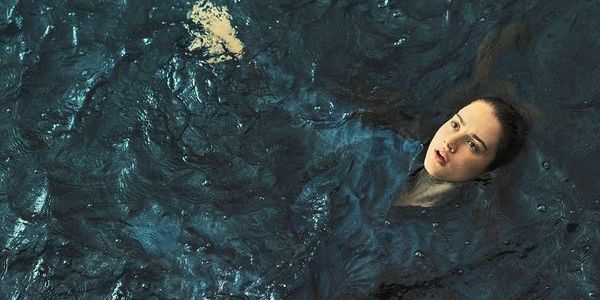The 10 Most Obsession-Worthy Shots of Brian De Palma’s Career
To say Brian De Palma is a master of obsession is an understatement. For more than fifty years, he’s demonstrated his skill as one of the best American filmmakers by creating works steeped in paranoia and abound with suspenseful sequences that would have made Hitchcock sweat. His films, while often revolving around characters driven by their own obsessions, have a unique ability to worm their way into viewers’ minds through technical achievement and thematic resonance.
From early masterworks such as Phantom of the Paradise to the overlooked and incendiary Domino, De Palma is gifted at crafting moments that don’t just linger, they burrow. Whether it’s a mind-bending split diopter, a startlingly vibrant color palette, or an assaultive act of violence, his films are unforgettable. This made selecting only ten shots a near-impossible task. One could select one-hundred shots from any given De Palma film and it still wouldn’t be a complete catalog of his skill. But the following ten shots are the ones that immediately come to mind when thinking about what makes De Palma the director he is.
Hi, Mom! (1970)
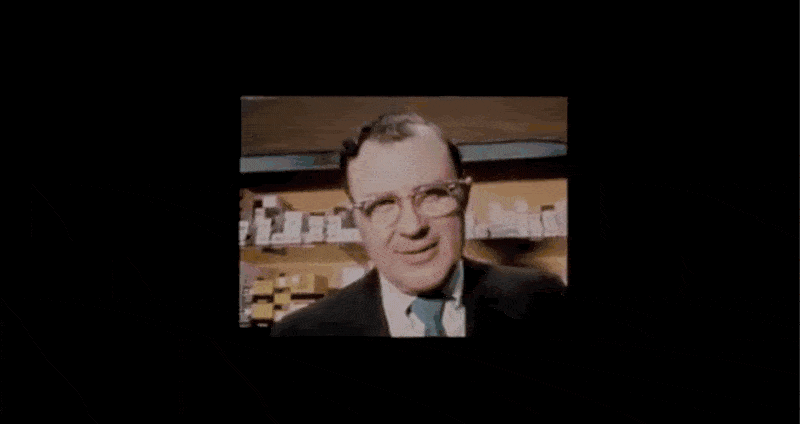
The Shot: A woman tests out her new camera by locating Robert De Niro‘s Jon Robin in her field of vision and zooming in on him.
The Obsession: One of De Palma’s signature components is voyeurism. In Hi, Mom!, a film very much about both active and passive forms of looking and observation, this moment highlights an intrinsic curiosity that is found across De Palma’s filmography. While aspiring pornographer Jon looks at his own equipment, this woman turns her attention to him in order to test out the zoom feature. She decides to zoom in on a stranger across the room. She remarks that he becomes blurrier the closer she zooms in, while the focus eventually adjusts as Jon turns his own camera on her.
It’s a rather insignificant moment, one that has very little bearing on the film’s narrative, but it captures some of the most prominent themes in the film. Here, the camera is a novelty, and the prospect of using it to capture footage of a stranger is a bit of lighthearted fun to the female patron, while to Jon it is a tool for invasive voyeurism. There’s a duality to the tool, one that contradicts and complicates any attempt to classify an inherent quality of the camera.
There are also contractions in its very mechanism. As the woman remarks, the closer she gets to Jon, the more the image becomes blurry. While she remains on the other side of the room, she gets a sense of proximity but loses clarity. This shot is also a remarkable comment on the impulses of both De Palma and his characters — when anyone has a camera in hand, they can’t help but aim it at another person. Sure, De Palma is a voyeur. Who isn’t?
Sisters (1972)
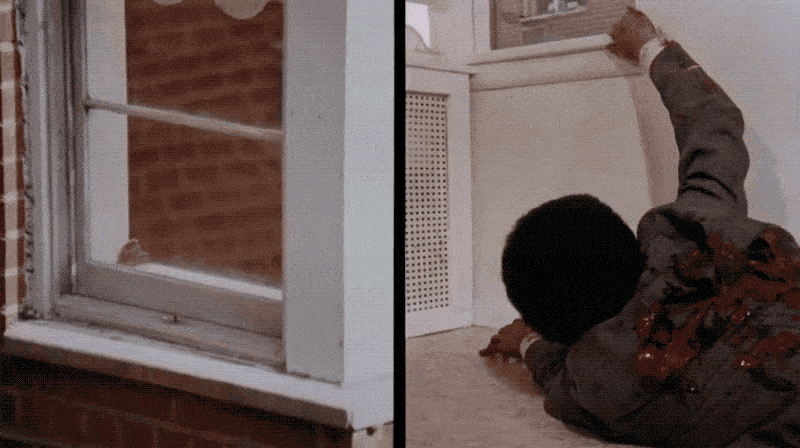
The Shot: After being stabbed, Phillip (Lisle Wilson) scrawls a plea for help on a window while simultaneously being witnessed by Grace Collier (Jennifer Salt) in another apartment.
The Obsession: Among De Palma’s most famed techniques is his use of split-screens and split-diopters. The split-screen is especially prominent in Sisters and naturally compliments the film’s use of doubles. At this point in the narrative, the shot also serves to pass the baton of lead character from Phillip to Grace, as she assumes the role of the protagonist when she begins investigating his death.
On its own, the shot from Grace’s apartment is one of surprise, confusion, and terror. The shot from Phillip’s perspective is about desperation, it’s the dying moment of a man in dire need of help, one where his last gesture is an attempt to reach out to a stranger. In his shot, the camera pushes in closer, focussing on his plea, a technique that would typically highlight the emotional weight of his experience at that moment. On the other side, however, the shot from Grace’s apartment pulls back. This serves a function as it allows us to see her reaction, but it also emphasizes just how alone Phillip is. And how anonymous he is. His is one window of dozens and it is pure luck that someone happened to be looking there at that moment.
It’s a shot of both sadness and paranoia; the despair of dying alone and the obsessive belief in what can be discovered when you look at the right place at the right time. Or perhaps the wrong place at the wrong time. There is also a nice touch of gallows humor on display that works especially well in conversation with the earlier Hi, Mom! While attempting to scrawl his message pleading for HELP, Phillip only manages HI. Talk about a punch line.
Carrie (1976)
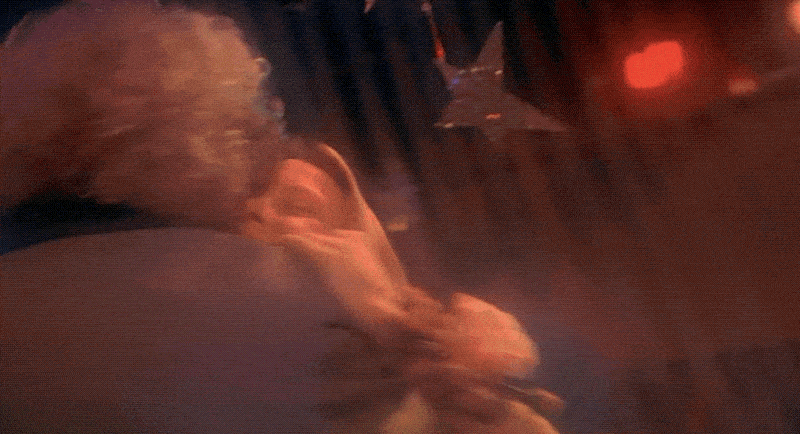
The Shot: The camera swirls around Carrie (Sissy Spacek) and Tommy (William Katt) as they dance at prom.
The Obsession: Carrie, in addition to being a staple entry in the horror genre, is a film rich with melodrama. Case in point: this moment at prom. Tommy leads Carrie onto the dance floor and confirms that while he didn’t plan for this, he’s enjoying himself. The romantics among us might even say he’s starting to fall for her. At first, the camera moves around them slowly, keeping with their rhythm. It then starts to speed up, becoming dazzling and dizzying. It is as overwhelming a shot as this moment is for Carrie.
De Palma also films from a low angle, ensuring that the perspective doesn’t capture any of the other prom-goers. While Katie Irving sings over the soundtrack that “tonight there’s only me,” De Palma visualizes it. It is as if the world is revolving around this couple and for a brief moment they are suspended from the horror that is waiting just around the corner. This is a sincerely touching moment in the film and De Palma lingers on it just long enough before increasing the pace of the camera’s movements. It’s enchanting and then quickly turns disorienting, even uncomfortable. It’s a brief, nice moment. But all good things come to an end.
Dressed to Kill (1980)
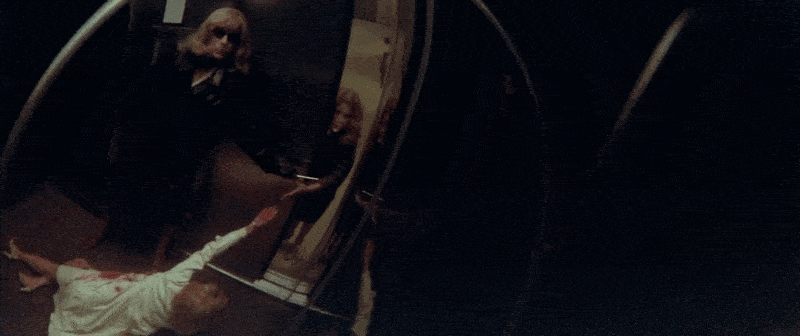
The Shot: Liz Blake (Nancy Allen) witnesses a mysterious killer in an elevator as the victim, Kate (Angie Dickinson) succumbs to her wounds.
The Obsession: De Palma has remarked that the elevator scene in Dressed to Kill is the best murder scene he’s ever made, and it’s pretty clear to see why. It’s a shocking and violent sequence that ends with this unshakeable and terrifying shot. It’s a perfect melding of coincidence. It exists at a point where the killer has the razor at the exact right angle to catch Liz’s eye and draw her attention up to the mirror. All the while, Kate is reaching out for help, desperate for someone to save her. It’s like a Giallo Renaissance painting.
The killer touch here is the convex mirror, the way it warps the image, capturing the entirety of the elevator and revealing the terror lurking on the other side of the door. It’s a haunting and arresting image, one that is as clever as it is genuinely frightening. It’s also rather quick. Liz only gets a brief look at the killer before the door shuts, and both the perpetrator and victim are lost. But it’s an image that becomes seared into her brain and what makes the rest of the film so compelling. Liz can’t shake what she saw in the elevator — how could anyone?
Blow Out (1981)
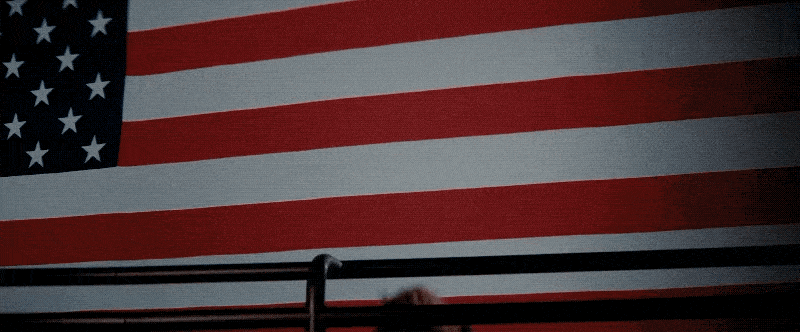
The Shot: Sally (Allen again) screams for her life against the backdrop of Philadelphia’s Liberty Day celebration.
The Obsession: For my money, this is it. This is the shot of De Palma’s career. It’s beautiful and tragic, wrapped up in violence and perversion, and completely unforgettable. Sally has been lured and attacked by John Lithgow‘s Burke while Jack (John Travolta) attempts to track them down. For a brief moment, Sally gets away and unleashes one of cinema’s greatest screams in an attempt to get Jack’s attention. It’s a brilliant turn of irony that this is happening amidst the Liberty Day fireworks. The spectacle drowns her out and the flag’s place in the celebration is now the backdrop to a brutal murder.
Of course, for all of De Palma’s staging, and for all of the brilliant narrative turns that have led to this point, this shot from Blow Out is nothing without Nancy Allen. This moment is absolutely harrowing, and she perfectly conveys every feeling of fear and despair. Her scream is one of terror, it’s a plea to prevent what she already knows is inevitable. Sally has been wrapped up in the conspiracy, and while she played a role in it, she’s been less drawn to the obsession than Jack. Sally’s endgame isn’t to uncover the mystery, it’s to leave Philadelphia and find another life elsewhere.
This gut-punch of a scene isn’t just about Sally being attacked, it’s about the loss of hope. This comes with the realization that just as she’s been lost in the spectacle of the celebration, her death will be overlooked. She will be mourned by only Jack. As much as there are a sly cynicism and an irony to the circumstances of this scene, there is a pure and indescribable sadness that exists here as well. It’s a good scream; it’s a perfect shot.
Scarface (1983)
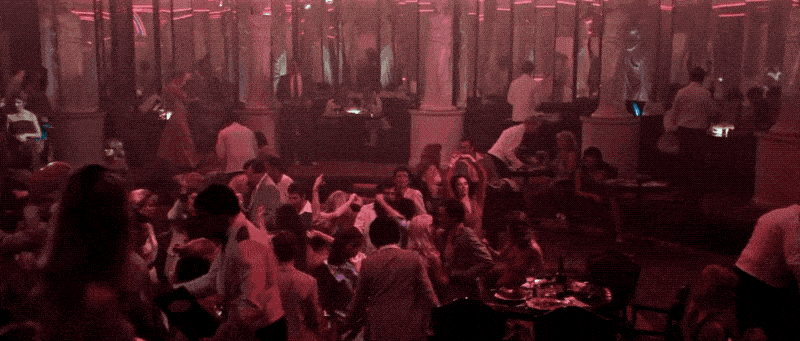
The Shot: The camera slowly pans around a packed club while narrowing the scope to focus on Tony Montana (Al Pacino) and Elvira (Michelle Pfeiffer) on the dancefloor.
The Obsession: Early on in Scarface, Tony Montana makes it clear that his goals are ownership and control. He doesn’t just want power, he wants the power to possess whatever he desires, whether the object of desire is a mountain of cocaine, a mansion, or a woman. As it turns out, that woman is Elvira, the boss’s wife and Tony’s target as the ultimate trophy. At the club, he dances with her while the camera sways around the floor, first conveying the scale of the room and then tracking in closer to the soon-to-be couple. Passing through the frame is a statue, and when the light hits it just right, it has an eerie resemblance to the teal dress adorning Elvira.
As the statue blocks her, it simultaneously obscures the image of her and brings her place in this world into sharp focus. She is, to Tony at least, a statue. She’s a piece of decoration and a symbol of wealth. No matter how big the club or how sprawling the mansion, there will never be room in Tony’s world for Elvira’s very human needs and desires. As much as Tony likes to watch her dance, it’s clear that to him she might as well be made of stone.
Body Double (1984)
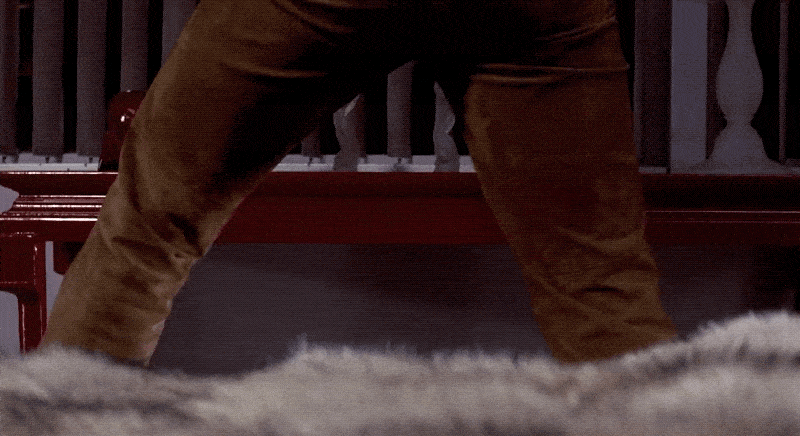
The Shot: An intruder with an aptly positioned drill prepares to murder Gloria Revelle (Deborah Shelton).
The Obsession: Subtlety is for suckers. In what is arguably De Palma’s sleaziest film, this shot from Body Double is the cherry on top of a bombastic sundae. This is a shot that even Freud would roll his eyes at. The only thing more pointed than the drill itself is De Palma’s vision of how intertwined sex and violence are. Of course, as much as one reaction here would be to (rightly) holler and clap at the screen, it’s also undeniable that this shot and the scene it exists in are viscerally upsetting.
Gloria’s death is brutal, as it should be. To shirk away from violence while making a film about violence would be a disservice to all involved. It’s fitting that Gloria’s murder has been heavily staged so as to draw the attention of Jake (Craig Wasson) the voyeur. As he’s been so clearly desensitized to boundaries, it only makes sense that the murder must be so overblown so as to make him truly feel it. He’s a man so out of his depth that subtlety won’t cut it. This shot, as obvious as it is, is also simultaneously horrific and comical. It works because, although the horror is felt for Gloria, the joke is at Jake’s expense.
Carlito’s Way (1993)
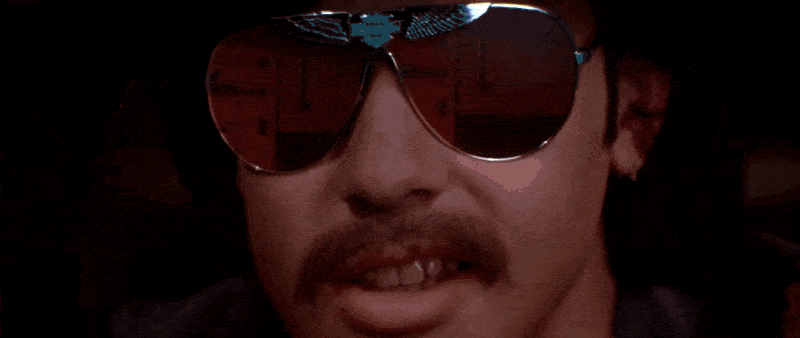
The Shot: In the sunglasses of a drug dealer, Carlito (Pacino again) watches an assassin attack his cousin.
The Obsession: “After you see this shot you’re gonna give up your religious beliefs.” So says Carlito as he sets up a trick shot around a pool table in Carlito’s Way. It’s a rather clever touch, watching Carlito put every piece into play so as to have command of the room, while, of course, De Palma is doing the exact same thing. Carlito strategizes so as to make sure his opponent — and, more importantly, his opponent’s reflective shades — are looking behind him. It’s a set up that allows him to strike back when he realizes that he’s being ambushed. It also allows De Palma to deliver this breathtaking shot, one that is disorienting, terrifying, and absolutely beautiful.
Even while this scene involves the two being lured into a trap, one that Carlito ends up shooting his way out of after his cousin is murdered, De Palma makes it clear that Carlito can, in fact, see all the angles. A few shots earlier, De Palma frames Carlito with a subtle wide-angle lens, a technique that creates the impression that Carlito’s world is warped and that it’s expanding in ways that are a little unsettling. This shot confirms those feelings by displaying that to survive what is to come, Carlito must literally have eyes in the back of his head.
Mission: Impossible (1996)
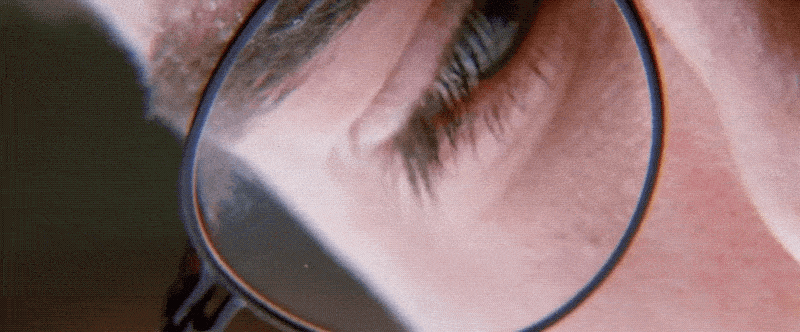
The Shot: An extreme close up on the face of Ethan Hunt (Tom Cruise) as a bead of sweat drips down his glasses.
The Obsession: In what is a strong contender for the greatest set piece in the franchise, Mission: Impossible‘s Ethan Hunt is pulling off a heist by dangling in the ua-sensitive white room. While later entries in the franchise have perfected the art of going big, De Palma’s initial reboot remains iconic in part because of how expertly he handles the minute details.
In this room, the slightest change in temperature, pressure on the floor, or sound will trigger an alarm. At this particular heart-stopping moment, a single bead of sweat threatens to give Ethan away. Should it fall to the floor, the pressure sensors would sound the alarm and send the planned mission crashing down. The proximity is startling, and as Ethan anxiously attempts to steady himself, it feels as though neither he nor any viewer would dare to breathe. This shot is a heart-in-your-throat and edge-of-your-seat moment of suspense that demonstrates that sometimes the smallest detail can be the most effective.
Femme Fatale (2002)
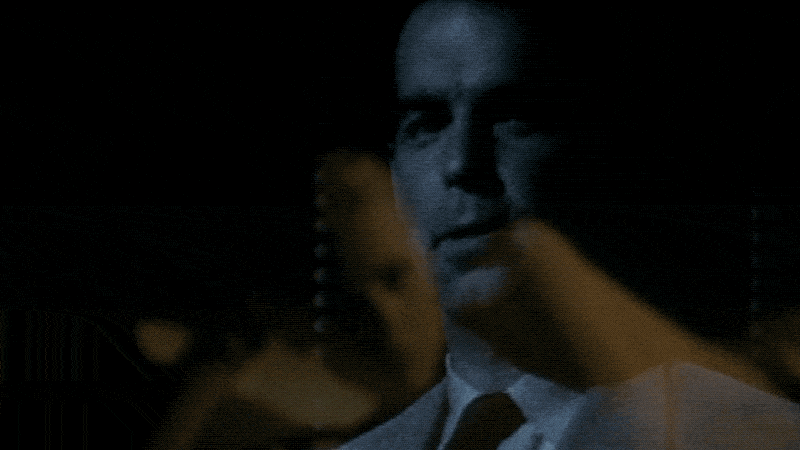
The Shot: A pivotal moment of Double Indemnity plays out on a television while Rebecca Romijn‘s Laure watches, seeing both the classic film noir and her own reflection on the screen.
The Obsession: More than a few of De Palma’s best moments involve mirrors, but it’s the opening of Femme Fatale that truly showcases how a single mirror shot can inform the entirety of the film. Opening a film titled Femme Fatale with the protagonist reflected in the image of Barbara Stanwyck in Double Indemnity is a rather audacious choice, but this shot goes far beyond its own cleverness. Femme Fatale is a film very much about the power of images, how they can implicate and entrance, how they can imply truth while obscuring reality, and ultimately, how they can be manipulated.
When Laure considers the trajectory of the femme fatale — whether she be in a seminal film noir text or her own future — it is a trajectory she aims to reimagine. From the first second of the film, De Palma informs us that Laure has a keen awareness of her place in this story. When she watches Stanwyck’s character, she sees herself reflected both literally and figuratively. For one of these femmes fatale, her narrative is fixed in a film made six decades prior. For the other, there’s still time to rethink how the story ends.




